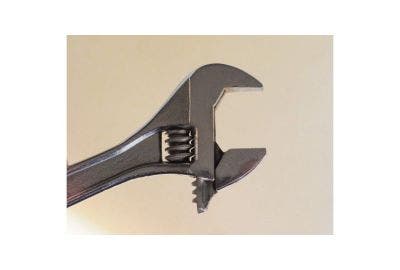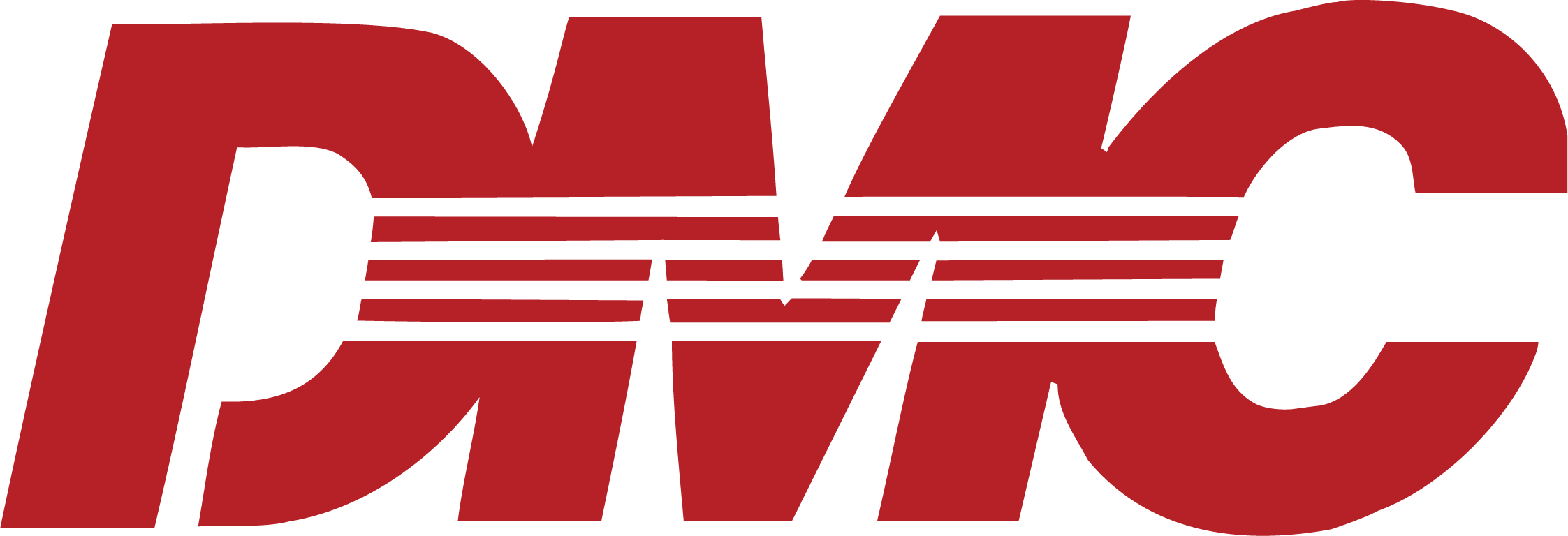Whether you’re tightening up a leaky tap, assembling flat-pack furniture, or replacing parts under the bonnet, the right spanner can make all the difference. But here’s the catch: what’s printed on the tool doesn’t always match what’s written on the bolt.
So if you’ve ever stood staring at a pile of nuts and bolts wondering which spanner to grab, you’re not alone.
This guide breaks down what spanner sizes actually mean, how fasteners are measured, and what you need to know to match tool to task without guesswork. We’ll also cover a few handy tools that make it easier, and a size chart you’ll want to keep bookmarked, in case you ever need to purchase a spanner that’s just right.
First, Understand Fastener Threads

Before reaching for your toolkit, it helps to know what kind of thread you're dealing with. A bolt isn’t just a bolt – the shape of the threads, and how they connect or seal, makes a big difference to which spanner you'll need.
Parallel Threads – Consistent Shape, External Sealing
Parallel threads, sometimes called straight threads, keep the same diameter from end to end. If you were to roll one on a sheet of paper, the marks would be evenly spaced all the way along.
What does this mean in practice? These threads don’t tighten to create a seal. They need a little help – usually with washers, o-rings, or thread sealants – to prevent leaks.
Common types:
BSPP (British Standard Pipe Parallel): Used mainly in plumbing, pneumatics and hydraulics in the UK.
Metric Parallel: Found in general mechanical applications and across many industries.
UNF/UN (Unified National Fine/Unified National): More common in North America, especially for automotive and machine parts.
These are often easier to assemble and disassemble without damaging the threads – ideal for regular maintenance jobs.
Tapered Threads – Wedge-Like Fit, Internal Sealing
Tapered threads narrow toward the end, so they get tighter the further you screw them in. Think of them as a twist-fit cork – as the two parts wedge together, they naturally seal.
This built-in tightness makes them popular for systems where fluid or gas pressure is involved, as the metal-on-metal contact itself helps stop leaks.
Common types:
- BSPT (British Standard Pipe Tapered): Often used in gas and water plumbing.
- Metric Tapered: Seen in heavy-duty hydraulic systems and machinery.
- NPT/NPTF (National Pipe Taper/National Pipe Taper Fuel): The American standard, widely used in oil, gas and fluid transfer systems.
Because they seal within the thread, these fittings don’t usually need a washer – but accuracy when choosing the spanner size is even more important, as overtightening can distort the thread or crack the fitting.
Tools That Help You Identify Thread Size
Some threads you can spot by eye. Others? Not a chance. If you're unsure, using a couple of simple tools can take the guesswork out of matching a spanner to a fastener.
Using a Caliper – To Measure the Diameter

A caliper (often called a vernier or digital caliper) helps you measure the thread’s diameter, which is a key part of working out what spanner you’ll need.
- For male threads (the kind that stick out), measure the outside diameter.
- For female threads (the kind with an opening), measure the inside diameter.
A good method is to measure across three points on the thread – near the start, middle, and end. If the numbers stay the same, you’re likely dealing with a parallel thread. If the numbers taper down, it’s a tapered thread.
Use millimetres for metric threads and inches for imperial. And if you're regularly working with different fittings, a digital caliper makes life a lot easier with clearer readouts and quicker checks.
Using a Pitch Gauge – To Measure Thread Spacing

Once you’ve got the diameter, the next step is measuring the thread pitch – that’s the distance between each thread.
A pitch gauge looks a bit like a folding ruler with lots of teeth-shaped blades. You match one of the blades against the threads until you find the one that fits perfectly.
- For metric threads, pitch is measured in millimetres (like 1.0mm or 1.5mm between threads).
- For imperial threads, it’s measured in threads per inch (like 14 TPI or 20 TPI).
This is where it’s easy to get caught out – two nuts might look the same but have slightly different pitch sizes. That difference matters, especially when choosing between closely matched spanners or fittings.
Common Thread Types and Pitch Sizes
Once you’ve used your caliper and pitch gauge, use this table to help identify the thread you’re working with. It matches typical pitch sizes to the most common thread standards – whether you're dealing with metric, imperial, or pipe fittings.
| Thread Type | Typical Pitch Sizes | Thread Style |
| BSPP (British Standard Pipe Parallel) | 11, 14, 19, 28 threads per inch (TPI) | Parallel |
| Metric Parallel | 1.0mm, 1.5mm, 2.0mm | Parallel |
| UNF/UN (Unified Threads) | 12, 14, 16, 18, 20, 24 TPI | Parallel |
| BSPT (British Standard Pipe Tapered) | 11, 14, 19, 28 TPI | Tapered |
| Metric Tapered | 1.0mm, 1.5mm, 2.0mm | Tapered |
| NPT/NPTF (American Pipe Threads) | 11.5, 14, 18, 27 TPI | Tapered |
A few points to remember:
- TPI (threads per inch) is used for imperial threads.
- Metric threads use pitch in millimetres – the space between two threads.
- Close matches can look identical but won’t thread properly – always double-check with a gauge.
Common Spanner Sizes Explained

Now that you’ve measured your thread and know what you’re dealing with, the next step is matching it to a spanner that actually fits – snugly, not just “close enough”.
The size printed on a spanner refers to the distance between the jaws (the flat parts that grip the nut or bolt). But how that size relates to your fastener depends on whether you’re working in metric or imperial.
Using the wrong size might still turn the bolt – but it’s more likely to slip, round off the corners, or even cause damage. Here's how to avoid that.
Metric Spanner and Bolt Size Chart
Metric spanners are labelled by the width across flats (AF), measured in millimetres. But the bolts they fit are labelled by their thread diameter, usually with an “M” in front (like M6 or M10).
| Spanner Size (mm) |
Fits Bolt Size (Metric) |
Typical Uses |
| 5.5mm | M3 | Small electronics, hobby parts |
| 7mm | M4 | Light switch plates, appliance casings |
| 8mm | M5 | Bike brake components, brackets |
| 10mm | M6 | Flat-pack furniture, general home fittings |
| 13mm | M8 | DIY shelving, furniture legs |
| 17mm | M10 | Cars, motorbikes, medium-duty machinery |
| 19mm | M12 | Fencing bolts, scaffolding clamps |
| 22mm | M14 | Suspension parts, pipe brackets |
| 24mm | M16 | Large mechanical fittings |
| 27mm | M18 | Industrial clamping systems |
| 30mm | M20 | Agricultural machinery |
| 36mm | M24 | Engine mounts, heavy plant |
| 46mm | M30 | Structural steel bolts |
| 55mm | M36 | Very heavy-duty fixings |
Imperial Spanner and Bolt Size Chart
Imperial spanners are measured in inches, based on the distance across the flats (AF) of the nut. These are more common in the US and older UK equipment.
| Spanner Size (Inches) |
Fits Bolt Size (AF) |
Typical Uses |
| 7/16" | 1/4" | Old toolboxes, vintage electronics |
| 1/2" | 5/16" | Furniture assembly, plumbing |
| 9/16" | 3/8" | Classic bikes, garden equipment |
| 5/8" | 7/16" | Steel framework, older fittings |
| 3/4" | 1/2" | Automotive parts, scaffolding |
| 7/8" | 9/16" | Light industry, metal brackets |
| 15/16" | 5/8" | Pipe flanges, construction gear |
| 1 1/8" | 3/4" | Suspension bolts, rail fixings |
| 1 1/2" | 1" | Marine fittings, large fixings |
Where You’ll See These Sizes Used
If you're wondering which sizes to have on hand, here's a quick cheat sheet:
- M6 (10mm spanner): Super common on bikes, furniture, and home fixtures.
- M10 (17mm spanner): Found on cars, gate hinges, light construction.
- M12 (19mm spanner): Often used in fencing and structural fixings.
- 1/2” imperial spanner (for 5/16” bolts): Still shows up on older plumbing and gearboxes.
Trying to ‘make do’ with a near-enough size? That’s how you round off a bolt head or chew up a nut. It’s always better to match the spanner to the job.
Which Spanner Should You Buy?
If you're building up a toolkit – or replacing the “nearly fits” spanners that keep slipping – the best place to start is with a basic, reliable set. That way, you’ve got a spread of sizes ready for most jobs, whether you’re tackling an M8 bolt on a new gate hinge or an old imperial fitting on a vintage engine.
Here’s what makes sense for most people:
- For DIYers: A metric spanner set covering 6mm to 22mm will handle everyday bolts on furniture, fixings, and light car maintenance.
- For older or imported gear: Add an imperial set – especially if you’re working on older British or American machinery.
- Working with fasteners regularly? A small set of measuring tools – like a caliper and pitch gauge – saves endless guesswork and helps avoid damaging parts.
And remember, grabbing the right size isn’t just about convenience. It’s about avoiding worn edges, seized bolts, or broken knuckles.
And if you're looking to round out your toolkit, Heamar stocks a wide range of hand tools – from individual spanners to full sets and measuring gear. Whether you’re just getting started or upgrading your current kit, there’s something practical for every kind of project.














































